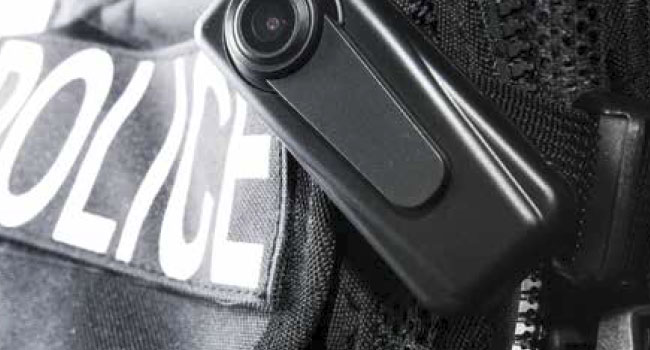
Eyes On You
The newest hot topic is all about the body
- By Greg Buckner
- May 01, 2017
In the world of law enforcement, the subject
of body-worn cameras has arguably
become the biggest talking point.
But in an age where anyone can pull
out a smartphone and record video that often
doesn’t provide everything that happened,
it’s vital for law enforcement agencies to have
a video record of their own that can help tell
the full story.
With the use of body-worn cameras
growing by the day, a research report released
by Technavio in February projects
the market to grow globally from $656.3
million in 2016 to $806.9 million in 2021.
And since the public calls for more transparency
from law enforcement, implementing
a body-worn camera program can help law
enforcement agencies improve relations with
the public while also protecting officers and
helping them improve the way they protect
and serve.1
In 2012, a study completed by the University
of Cambridge-Institute of Criminology
in partnership with the police department
in Rialto, Calif., examined whether bodyworn
cameras would impact the number
of complaints against officers or on officers’
use of force. The study was carried out over
a year period, and the department randomly
assigned body-worn cameras to various officers
across 988 shifts.
One of the main takeaways from the study
was the “self-aware effect” the cameras caused
as a “neutral third eye.” The study suggests
that neither officers nor the public want to
“get caught engaging in socially undesirable
behavior that may have costly consequences.”2
The body-worn camera works as an unbiased
observer which helps to “cool down”
both parties, and that is backed up by the statistics
the study produced.
The study found that there was a 60 percent
reduction in officer use of force incidents
after cameras were deployed, with the shifts
without cameras having twice as many use of
force incidents as shifts using cameras. In addition,
the study also found there was an 88
percent reduction in the number of citizen
complaints from the year prior to camera deployment
and the year following deployment.3
Even more recently, the police department
in San Diego, Calif., completed an internal
nine-page report in February 2017 that reported
since its officers began wearing bodyworn
cameras nearly three years ago, the department
has witnessed a 43.1 percent drop
in officer misconduct allegations and a 16.4
percent drop in use of high-level force, such
as physical takedowns and weapon discharge.4
The report also stated that of the 520,000
incidents San Diego officers responded to
last year, just over 4,600—less than 1 percent—
involved the use of force.4
Body-worn cameras also capture timeperishable
intelligence at crime scenes that
would otherwise have been lost. As part of a
2014 research report completed by the Police
Executive Research Forum (PERF) Community
Oriented Policing Services (COPS)
regarding the body-worn camera program,
Jason Parker, Chief of Police for Dalton,
Georgia, described the benefits of utilizing
body-worn cameras in regards to evidence
documentation, specifically regarding collecting
evidence at accident scenes.
“Body-worn cameras capture everything
that happens as officers travel around the
scene and interview multiple people,” Parker
said. “The body-worn cameras have been
incredibly useful in accurately preserving
information.”
Parker explained that officers are often
focused on securing the scene and performing
life-saving measures, and that witnesses
and victims may not always remember what
they had told officers in the confusion. This
can lead to conflicting reports when victims
and witnesses are asked to repeat their accounts
in later statements. With this information,
body-worn cameras help to better
capture evidence and document it.5
Add in the fact that many body-worn
cameras now have pre-event recording capabilities
that capture video of events that
happened prior to the manually activation
of a recording, and that makes it even easier to ensure that crucial evidence isn’t lost or
misinterpreted.
In addition to the other needs utilizing
body-worn cameras can address, they also can
function as an important training tool to help
identify and correct organizational problems.
According to a survey completed by
PERF as part of the previously mentioned
2014 research report, the survey found that
94 percent of respondents use body-worn
camera footage to train officers and aid in
administrative reviews.5
For example, the survey states agencies
are using footage from body-worn cameras to
provide scenario-based training, to evaluate
the performance of new officers in the field,
and to identify new areas in which training
is needed. Utilizing body-worn cameras for
training purposes can help an organization
improve the way it polices, while also improving
credibility with the public.5
With all of the benefits implementing
a body-worn camera program can bring to
law enforcement agencies, and the need to
improve police and community relations in
a time where society is closely watching both
parties, law enforcement agencies can’t afford
to leave the truth open to interpretation.
This article originally appeared in the May 2017 issue of Security Today.